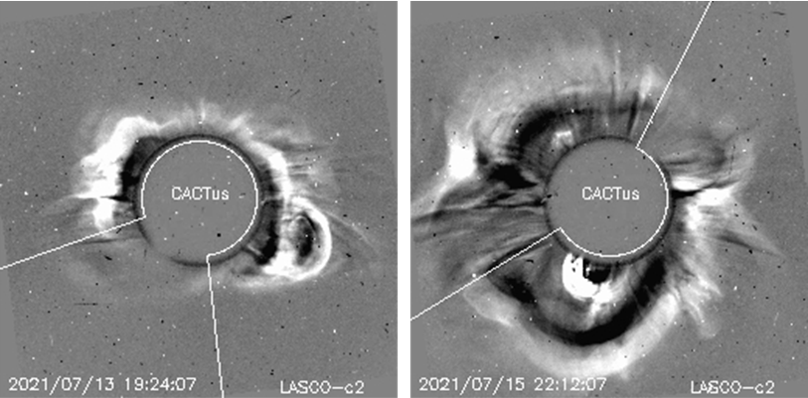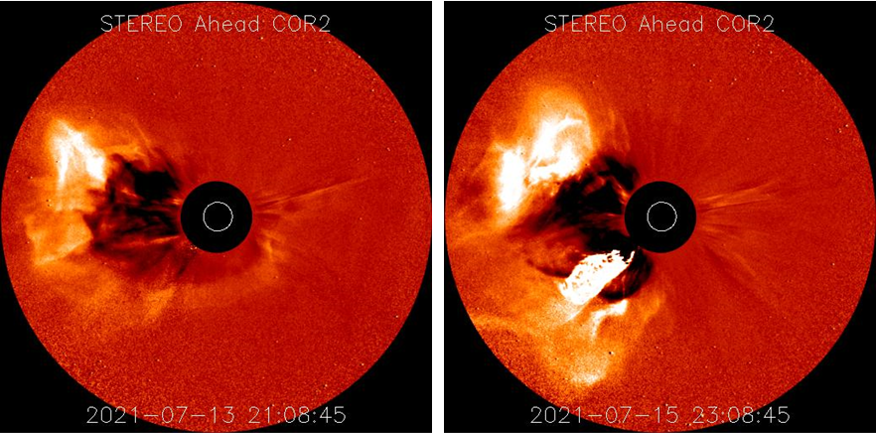Last week, subscribers to the alert messages issued by the SIDC/RWC were surprized to receive several alerts on halo or partial halo coronal mass ejections (CMEs) as detected by the CACTus software. Two halo CMEs visible in SOHO/LASCO C2 coronagraphic imagery on 13 and 15 July seemed especially threatening, having speeds estimated to be between 1000 and 1500 km/s. Fortunately, analysis by the SIDC space weather forecaster on duty quickly revealed these CMEs had their origin on the Sun's farside, and were not directed to Earth.

These CMEs were just 2 events in a long series of CMEs detected by CACTus (see the STCE's Acronym list) that started on 3 July when the active sunspot region NOAA 2838 produced an X-class flare and rounded the Sun's northwest limb a day later (see this STCE Newsitem). Though we don't have a satellite keeping an extreme ultraviolet (EUV) eye on that side of the Sun, imagery by STEREO-A/EUVI -currently trailing the Earth by about 45 degrees- revealed some stirring in the corona over the northeast limb between 18 and 19 UT on 13 July, making NOAA 2838 the likely source of this eruption. The CME of 13 July clearly had a main component towards the northeast (see imagery underneath). NOAA 2838 returned as the not very impressive sunspot group NOAA 2846 on 19 July.
Activity then gradually seemed to move to regions in the southern solar hemisphere, and the CME from 15 July originated indeed from a region near the southeast limb. This CME was quite spectacular, with a solid core filament ejected mainly towards the south. The source region may be NOAA 2835 or one or more regions that have developed close-by. NOAA 2835 was a rather big but mostly inactive sunspot region, producing only some low-level C-class flares while transiting the solar disk from 25 June till 6 July. As the entire active area is only now (20 July) starting to round the southeast solar limb, it's still a bit too soon to say anything about the sunspot group(s).

With all these CMEs originating on the farside of the Sun, one would be tempted to expect that the earth environment would remain unaffected. However, instruments recording the proton flux levels at the L1 point (first Lagrangian point, about 1.5 million km from the Earth in the direction of the Sun) such as the ERNE instrument on board SOHO and the SIS instrument on board ACE, showed a different picture. Obvious increases recorded on 14 July and on 16-17 July correspond to the farside activity on 13 and 15 July as discussed above. The GOES proton flux shows barely any increase at all.

Proton events usually originate from an erupting source on the western solar hemisphere as seen from Earth, because the Sun's magnetic field lines are much better connected from there to the Earth environment (Parker's spiral). However, it is well known that proton events and enhancements can originate from the Sun's farside too. Typical examples are the 23 July 2012 event and the 1 September 2014 proton enhancement. The exact mechanism behind this is not entirely understood yet.






